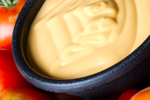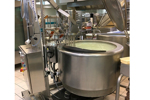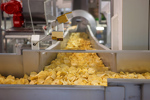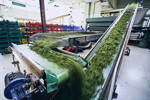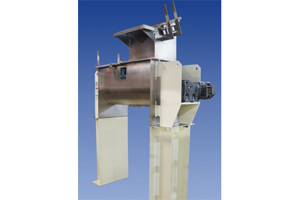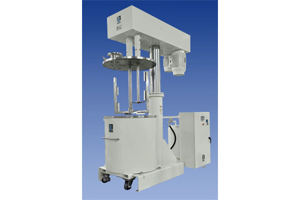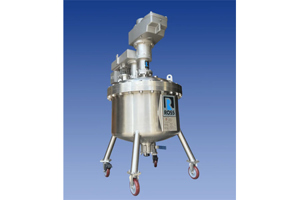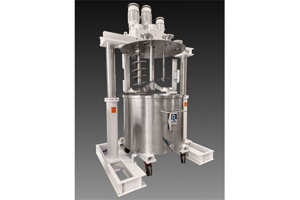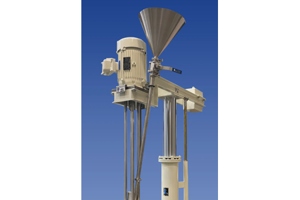FOOD MIXING CASE STUDIES
-
National Fast-Food Chain Supplier Improves Efficiency With Mixer Selection
After trial periods with mixers, this food manufacturer has bought several mixers over the past 10 years to help improve the quality and mixing times of their broths, dressings, salsas, and cheese sauces.
-
Hospital Saves Money By Mixing And Producing Soups In House
By making the soups in-house, costs of purchasing from a specialist supplier have been eliminated and the mixers will pay for themselves in a short time through the savings made.
-
Recycling Frying Oil In The Snack Industry
A company reduced the amount of vegetable oil waste they were producing in their potato chips (crisp) batch frying process by prolonging the usable life of the oil.
-
Jelly Manufacturer Cuts 20% Of Pectin From Formulation With Mixer Solution
A jelly and marmalade producer has been able to reduce the amount of pectin in their formulation by 20% and reduce their process times and waste by replacing their agitators with mixers.
-
Food Service Company Uses Mixer And Homogenizer Combination To Avoid Equipment Clogging
A company replaces high-pressure homogenizer with an in-line mixer as a final, single-pass before pasteurization to avoid lumps and clogging of the equipment.
-
Biscuit Manufacturer Improves Powder Incorporation
This manufacturer found a solution for incorporating whey powder and egg powder into water correctly while also correcting aeration and foaming issues.
FOOD MIXING WHITE PAPERS & ARTICLES
-
Best Practices For Conducting Virtual FAT's In Food Manufacturing
When the COVID-19 pandemic hit, it became critical that manufacturing plants remain open and operating to provide essential items such as food, beverage, sanitation supplies and more to consumers. New practices were put into place to ensure the safety of all and maintain efficient, effective operations. A critical aspect of keeping up with consumer demand has been the testing and acceptance of new equipment. With consumer packaged goods (CPG) companies reluctant to bring suppliers into their facilities and service technicians limited in their ability to travel due to COVID-19 protocol, the industry has had to get creative to complete the process.
-
Article: The Science Of Mixing Food Powders & Liquids This article explains the technologies and processes involved in product mixing of solids and liquids. By Scott Jones, Marketing Manager, Marion Mixers, Inc.
-
Article: The Economics Of Retrofits: Is It Time To Repair Or Replace? Food Processors need to compete by delivering high-quality, safe products. Also being challenged by price volatility, pinched consumer demand and supply chain issues may cause profit erosion. With an increased focus on cost-saving strategies, it’s become fashionable to “prevent waste” in your processing systems. By Scott Jones, Marion Mixers
-
Contamination Control In Food Processing Equipment
Here, we highlight the issues processors experience in preventing contamination and how engineering for contamination control in food processing equipment can be a solution.
-
Mixing Equipment And Applications In The Food Industry
We discuss traditional and new specialty mixing technologies for food manufacturing and present sample applications of processing challenges and the corresponding mixing technologies to resolve them.
ABOUT FOOD MIXING
Industrial food mixing usually refers to the process of combining two or more separate components to produce a certain level of homogeneity. Mixing is often an interchangeable term with blending. However, where blending is typically a gentler process, mixing can combine ingredients at more aggressive rates to create a homogenous mixture. Most processed foods start with a mixing process to achieve physiognomies that are imperative to the final product like homogeneity, texture, temperature, and structure.
The key objective of industrial food mixing is to have unvarying distribution (homogeneity) in the product. Typically, the homogenization consists of particle size reduction, which is achieved by the action of shearing forces. Homogenization is most-commonly known in the processing of milk.
Different products have different objectives, such as creating a stable emulsion. An emulsion is a product of mixing two immiscible liquids. Common examples in food processing would be creams, soups, sauces, mayonnaise, and margarines.
Industrial food mixing equipment is offered in various styles. The style that your food-making operation needs will be based on many different factors, such as, but not limited to: what is being mixed, desired viscosity, desired particle reduction, batch size, the facility’s available manufacturing space, energy costs, discharging options, cleaning, and sanitation options.
The most-common styles of industrial mixing equipment are:
- High-Shear Mixers — disperse one ingredient into a main, continuous ingredient (liquid) which typically would be immiscible. A rotor and stator, or an arrangement of rotors and stators, is used either in a tank holding the solution or in a pipe where the solution would pass through to create shear.
- Batch High-Shear Mixers — ingredients to be mixed are fed from the top into a mixing vessel. These are typically used when larger volume and quicker processing is required.
- Inline High-Shear Mixers — the rotor-stator arrangement is contained in a housing with an intake at one end and discharge at the other. Ingredients are drawn through a pump array in a continuous stream. They offer a more-controlled mixing atmosphere, require less floor space, and can be part of a continuous process.
- Heavy-Duty Mixers — these mixers are for highly-viscous materials such as dough, peanut butter, confectionary syrups, beverages, sauces, and pastes.
- Dual- or Multiple-Shaft Mixers — these mixers have an array of two or more independently-driven agitators working together. Typically, one is a slow-paced agitator to continually move the bulk of the material (two-wing or three-wing anchor blades) and high-shear mixers to continually mix the batch to the desired consistency. Often times, it could be the combination of two paddle-style impellers.
- Planetary And Double-Planetary Mixers — both of these can have helical-finger style blades or rectangular stirrer blades. They are used when a mix requires no air being whipped into the mixture. These mixers rotate and move all around the mix container passing through the entire batch. An example of when a dual-planetary mixer would be used is if you were mixing butter, large blocks of cream cheese, and various viscous ingredients together.
FOOD MIXING NEWS
-
Much More Than Mixers: Marion Mixers Renamed Marion Process Solutions1/13/2015
In alignment with Marion Mixers expanding product and service capabilities, the enterprise announced recently that it has changed its name to Marion Process Solutions.
-
New SanStar Mixers From SPX Are Designed For Demanding Sanitary Applications12/9/2014
PX introduces the new SanStar SSi (Stainless Steel inline) sanitary mixer from its Lightnin brand.
-
Intelligrated Features New Robotic Mixed-Load Order Fulfillment Solutions At PACK EXPO Las Vegas 20139/23/2013
Las Vegas - Intelligrated®, a North American-based automated material handling solutions provider, introduces two new capabilities to its range of mixed-load automated order fulfillment solutions at PACK EXPO Las Vegas 2013.
-
Growing Demand For Processed Food Drives The Global Food Processing Machinery And Equipment Market, According To New Report By Global Industry Analysts, Inc.5/14/2012
GIA announces the release of a comprehensive global report on Food Processing Machinery and Equipment markets. The global market for Food Processing Machinery and Equipment is forecast to reach US$45 billion by the year 2018, driven by the growing demand for processed food across geographies

